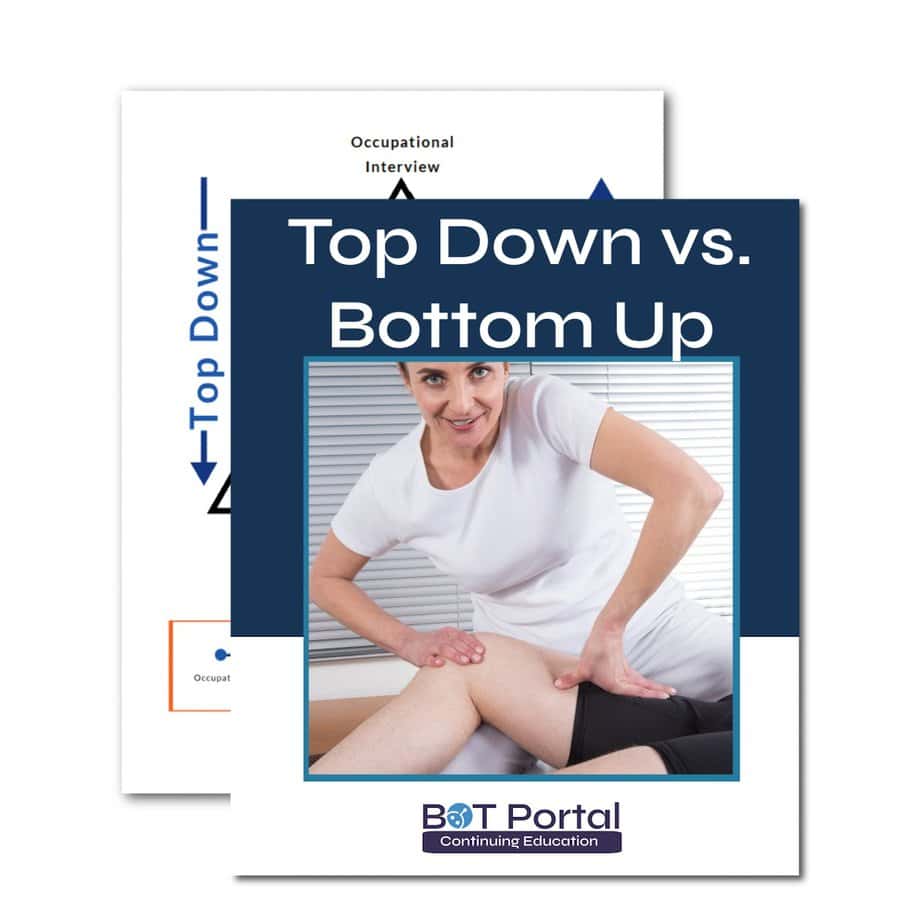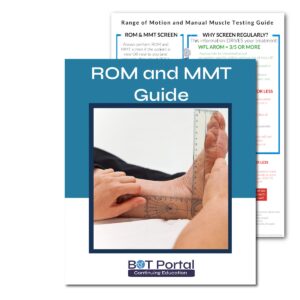Description
Top-Down and Bottom-Up Approaches
In occupational therapy (OT), there are two primary approaches to treatment: top-down and bottom-up approaches. Each approach offers a different perspective on how to evaluate and address a person’s needs to improve their daily functioning and quality of life.
Top-Down Approach
The top-down approach focuses on the person’s participation in meaningful activities and their overall life roles. This method starts by understanding the individual’s goals, routines, and the activities they need or want to perform, such as dressing, cooking, or working. It emphasizes the importance of the person’s environment and context in achieving these activities.
Here’s how it works:
- Assessment: Therapists begin by discussing with the individual their daily life, the activities they find meaningful, and any difficulties they encounter. For instance, they might ask about the challenges a person faces when getting dressed or cooking a meal.
- Intervention: Based on this understanding, therapists develop strategies and adapt the environment to support the person’s participation in these activities. This could involve teaching new techniques, modifying tasks, or using adaptive equipment. For example, someone with limited hand strength might learn to use special utensils to cook more easily.
- Focus on Goals: The therapy is goal-oriented, aiming to help the person achieve specific outcomes that are important to them. This approach ensures that interventions are relevant and motivating, as they are directly linked to the person’s daily life and aspirations.
Bottom-Up Approach
The bottom-up approach, on the other hand, focuses on the underlying skills and deficits that impact a person’s ability to perform activities. This method starts with assessing and treating specific physical, cognitive, or sensory impairments.
Here’s how it works:
- Assessment: Therapists evaluate the individual’s physical abilities, such as strength, range of motion, and sensory processing. For example, they might measure how well a person can move their arm or how they respond to different textures.
- Intervention: Based on these assessments, therapists design exercises and activities to improve these specific skills. For example, if someone has difficulty grasping objects due to weakness, the therapist might use hand-strengthening exercises.
- Focus on Skills: The therapy aims to build up the foundational skills that support overall function. As these skills improve, the person’s ability to perform daily activities typically enhances as well.
Importance in Rehabilitation
Both top-down and bottom-up approaches are essential in OT and often complement each other. The top-down approach ensures that therapy is meaningful and directly applicable to the person’s life, while the bottom-up approach addresses the specific skills needed to achieve broader functional goals.
By integrating both methods, occupational therapists can create comprehensive, individualized treatment plans that not only improve specific abilities but also enhance overall participation in daily life.
The top-down approach in OT focuses on improving participation in meaningful activities by adapting tasks and environments, while the bottom-up approach focuses on enhancing underlying skills through targeted exercises. Both top-down and bottom-up approaches are crucial for effective rehabilitation, helping individuals regain independence and improve their quality of life.




